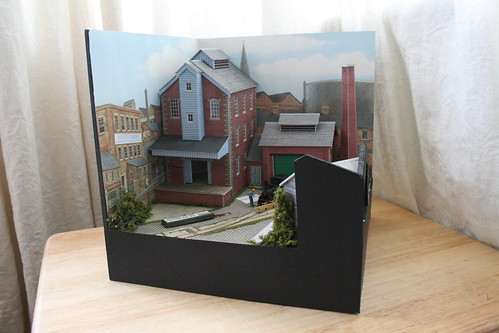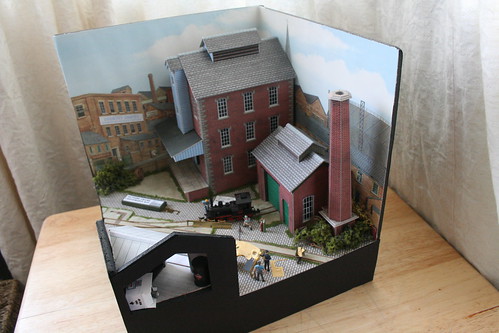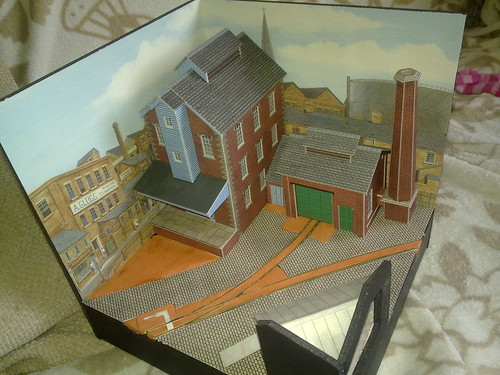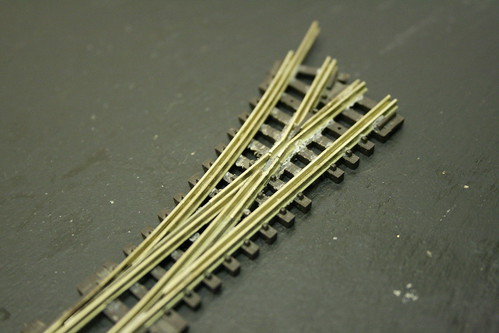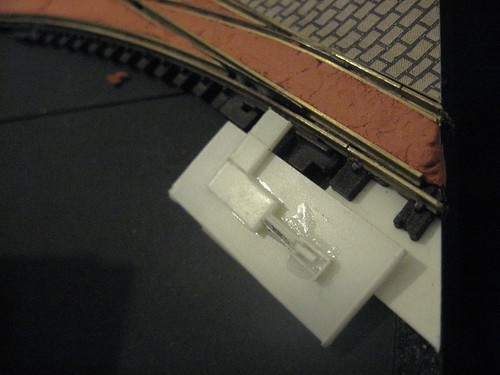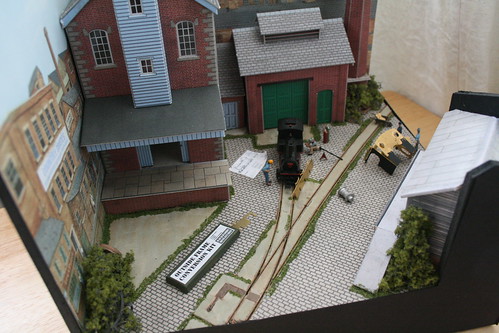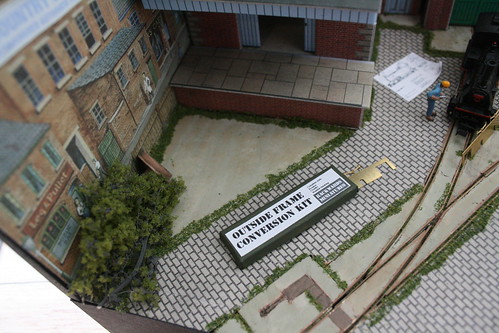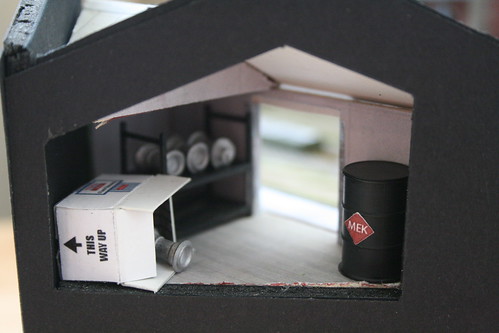Cuckoo Lane Anglicisation Works
009 diorama expong model-railways narrow-gaugeI started, but never finished, an entry to the annual ExpoNG modelling challenge in 2008, so I thought that this year I really had to make the effort. The theme was to portray a servicing facility for narrow gauge locos or rolling stock in an area of no more than 60 scale feet in each direction – the choice of scale was completely open. For 2009 the competition was named the Dave Brewer Memorial Challenge in tribute to the late chairman of the G&DNGRS, who with other members of the society did so much to encourage and promote narrow gauge modelling through the establishment of ExpoNG.
I’ve already written about all the entries to the challenge together, but what better place than here to go into a bit more detail about mine.
It’s hard now to recall exactly how I came up with the idea, but I think it was probably a riff off one of the jokes. As it might be possible to tell from the name, Cuckoo Lane Anglicisation Works is based around the thought that many OO9 locos are converted from “unsuitable” N gauge donors – often “Continental” in origin, and that it might be funny to show that process as if the 4mm scale workers were actually doing the conversion. The Cuckoo, of course, is a reference to the small Ibertren chassis which was the mechanism of choice for many OO9 loco kits until its production ceased in the 1990s and is somewhat sought after.
Construction of the “baseboard” is simple – black coloured foamboard hot-glued together with minimal bracing underneath to hold the parts together. The buildings were pick’n’mixed from the Metcalfe brewery and water tower kits, and the backscene is the venerable Peco urban industrial one. Perhaps providing a full backscene and full relief buildings was possibly a little too much in such a small space, but I wanted to give the impression that this was a slice of “generic model railway” where something weird was happening. The odd-shaped lump in the front corner is less than half of a Scalescenes store building which was hacked apart to experiment with a view through the open door into the yard beyond.
I wanted to portray inlaid track with checkrails, including a turnout, and soon realised the quickest way to do this was forget about trying to make it work electrically. I’ve written about the turnout before, but – briefly – I chopped out the plastic crossing vee and checkrails from an old N gauge Peco turnout and replaced the parts with continuous checkrails. Extra rail was also added to the plain track and the whole lot was infilled with DAS modelling clay – making sure to keep the flangeways clear.
For control of the turnout, I mocked up a tiny inlaid lever which is based on prototype photos and sits flush in the ground surface when not in use so it can’t get in the way of people or vehicles. This was surrounded with more DAS to create a concrete plinth setting for it.
Beyond that, the basic scenery of the diorama is conventional. Metcalfe cobble sheets were used to create the street surface the tracks are inlaid into, alternated with DAS concrete for some variation. Scenic scatter was used to give a weed-strewn effect in the cracks (and hide the gaps!). Once this was all in place I could concentrate on the purpose of the diorama – the appalling puns…
Probably the most obvious one is the “outside frame conversion kit”, which the hapless workers are attempting to fit to an unmodified Minitrix 0-6-0 picked up cheaply from the OO9 Society Sales Stand. The packaging is presented in the style used by Backwoods Miniatures (who of course provide complete OO9 kits with accurate chassis parts) and the frames themselves are cut down from a Meridian feldbahn loco. In the background, the plans they are working to are for the Welshpool & Llanfair ex-Sierra Leone Hunslet, which I have also been “working on” in 4mm scale for the past year.
Over on the other side of the yard, a new cab is being fabricated from a brass etch for an Alco WWI loco, another spare part from Meridian. The order of assembly is somewhat haphazard, and there is a wheelbarrow full of number and works plates to be added. In the bushes around the foundry chimney, spare parts from a Dapol Drewry diesel shunter quietly rust away.
Looking through the open side of the stores building, you can see some of the supplies that are “in stock”. On the left, a Tesco six-pack of Value loco chimneys is being tidied onto the shelves, on the right a massive vat of MEK (actually a 7mm scale oil drum) awaits.
The view of the yard framed by the stores maybe didn’t come out quite as I was anticipating, but it does offer an interesting alternative viewpoint.
Now that the diorama is complete and has served its purpose I don’t really have much use for it, but it has been an entertaining experience putting it together – especially as I have this habit of leaving things to the last minute and most of the work was done in the final two weeks before show!
- Previous: ExpoNG 2009 – loco parade
- Next: The ExpoNG effect, and a century
